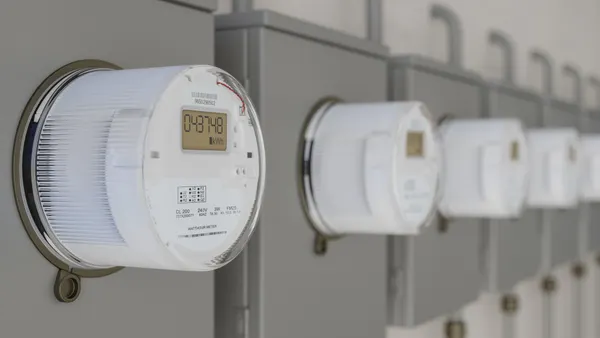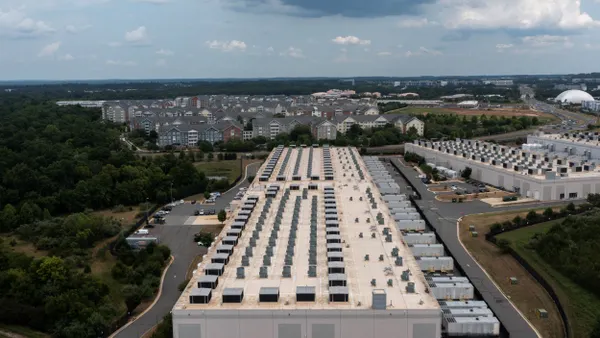In 2018, Massachusetts, citing a failure to show cost-effectiveness, opted to not roll out smart meters when seemingly every other state was marching down that path. The Department of Public Utilities made the decision to hold the line and really focus on showing value for cost before green-lighting any major infrastructure initiatives.
Now, with the gift of hindsight and advancing technologies, it appears that they made the right call. Turns out, good things come to those who wait.
Massachusetts approval of both National Grid and Eversource’s AMI plans in 2023 has given the state an opportunity to be a national leader and set the standard for how utilities are going to leverage new meter infrastructure for both customer value and operational value. They are starting from scratch in the best way, with the absolute best technology.
With the pending omnibus climate bill hitting the floor this year, Massachusetts is positioned to pursue more aggressive policy objectives. Leveraging these meters once they are here is where the rubber meets the road. It’s incumbent on policy makers, both the legislature and the DPU, and utilities to focus on a set of policies and program designs to really maximize that investment.
So, if I could have the ear of policy makers and regulators, what would I say?
Allow Software to Compete
The reality is that the energy transition is going to be costly, and the New England states are already dealing with upward rate pressure. If we don’t want to overburden customers, we need to rely less on expensive hardware solutions and leverage distributed software as much as possible. That will help minimize the overall cost of this transition, while also providing direct benefits to customers.
Today, utilities are not directly incentivized to take this approach. With the right kind of regulatory innovation, we could support business cases to earn a return on software investments similar to how other utility expenses like hardware are capitalized.
Software also offers a unique advantage over hardware: it can be upgraded remotely at very little cost. These meters will be in place for 15 to 20 years and the energy transition will need to happen over that timeframe. It is critical that these meters be an ongoing catalyst, not a barrier, for innovation. Grid edge software has an opportunity to minimize the long-term cost impacts to Massachusetts customers.
Enable Demand Flexibility
We know we must have more flexible resources on the grid. We know we must have ways to get customers to engage and we know we must have easy ways to dispatch those resources. We need to stop thinking about this just from a grid operator perspective and start thinking about it from an ease of customer enrollment and interaction perspective.
FERC 2222, issued in September of 2020, instructs grid operators to enable the aggregation of smaller distributed energy resources (DERs) to participate in wholesale markets. However, data availability to first generation smart meter data (typically 60-minute interval data) has been a barrier to aggregators. Customer opt-in has relied on arduous processes resulting in little to no upside for customers and limited buy-in.
Priority number one needs to be getting customers enrolled and participating, giving them rapid feedback mechanisms and enabling automation of DERs optimized for market signals. With near ubiquitous deployment of next generation meters over the next 5 years, Massachusetts has an opportunity to lead the transformation of these program models. Customers will have the opportunity to manage demand in real-time and on-the-meter applications like Sense can enable simple enrollment and data sharing across market aggregators.
Beyond FERC 2222, the next generation of meters in Massachusetts will also allow utilities to leverage demand flexibility not just for bulk system benefits, but also for local reliability. Grid edge solutions like Sense can connect real-time load conditions behind the meter to available capacity on the distribution network and then help aggregators and utilities balance loads through automation. This approach will help ease constraints posed by rapid electrification while also reducing the long-term rate impact of grid modernization in Massachusetts.
Massachusetts can show us all that with patience and smart policy, it’s possible to deliver on an AMI 2.0 smart meter rollout that not just ticks all the boxes but shows us how to build a better box.
While Massachusetts is leading the way, the Rhode Island PUC made the innovative decision to approve Rhode Island Energy’s Advanced Metering Functionality (AMF) plan in 2023 and Connecticut has been making slow strides toward AMI 2.0 approval. A future of grid edge software running on all Southern New England homes is within sight and we can begin to envision how this can be replicated over other states and regions. Years from now, when we look across the country and see successful, customer-centric, grid supporting AMI 2.0 rollouts, we can all tip our hats and say a big thank you to the Bay State.










